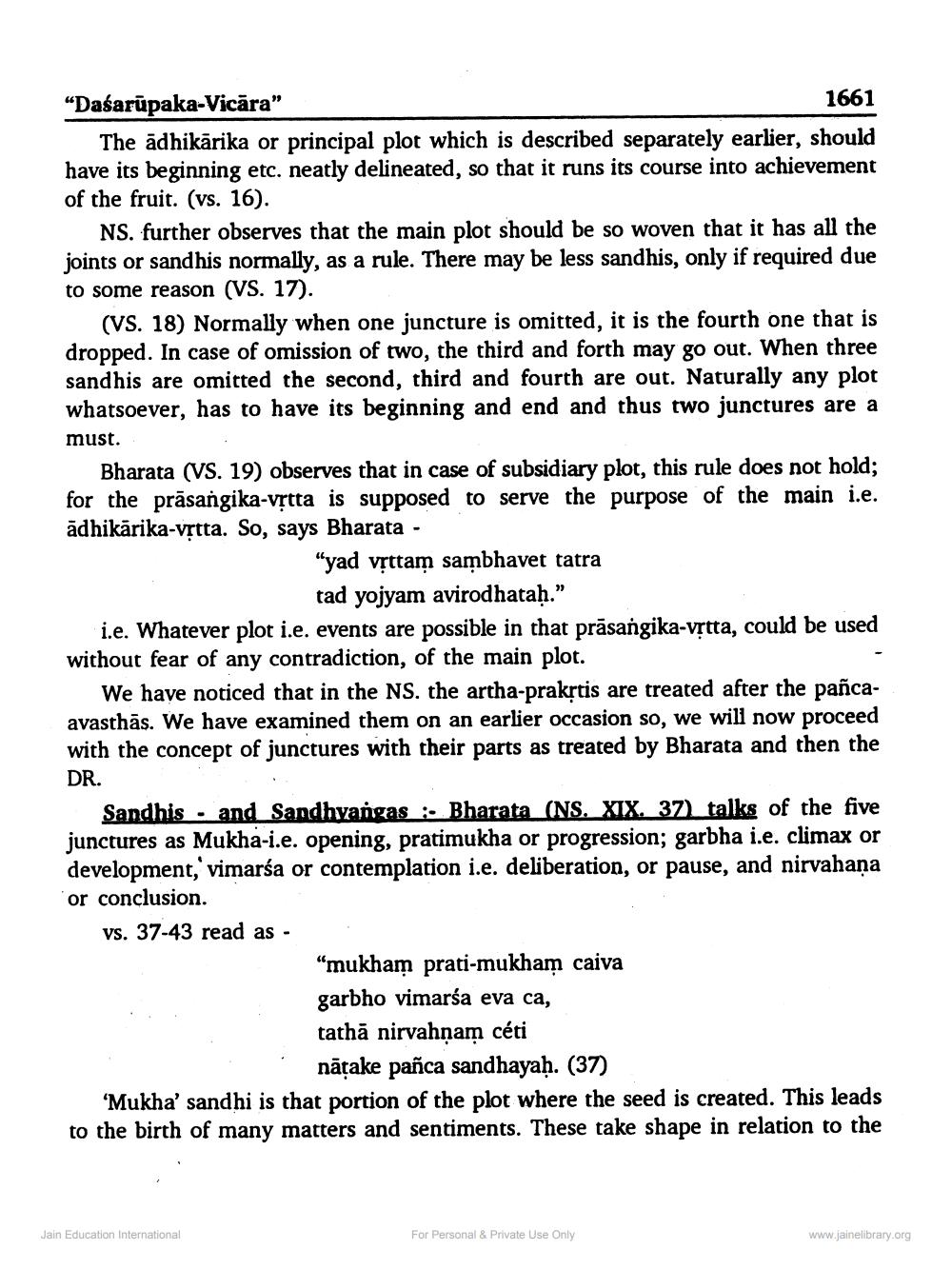________________
"Dasarūpaka-Vicăra"
1661
The adhikarika or principal plot which is described separately earlier, should have its beginning etc. neatly delineated, so that it runs its course into achievement of the fruit. (vs. 16).
NS. further observes that the main plot should be so woven that it has all the joints or sandhis normally, as a rule. There may be less sandhis, only if required due to some reason (VS. 17).
(VS. 18) Normally when one juncture is omitted, it is the fourth one that is dropped. In case of omission of two, the third and forth may go out. When three sandhis are omitted the second, third and fourth are out. Naturally any plot whatsoever, has to have its beginning and end and thus two junctures are a must.
Bharata (VS. 19) observes that in case of subsidiary plot, this rule does not hold; for the prāsangika-vrtta is supposed to serve the purpose of the main i.e. adhikarika-vștta. So, says Bharata -
"yad vịttam sambhavet tatra
tad yojyam avirodhataḥ.” i.e. Whatever plot i.e. events are possible in that prāsangika-vrtta, could be used without fear of any contradiction, of the main plot.
We have noticed that in the NS. the artha-prakstis are treated after the pañcaavasthās. We have examined them on an earlier occasion so, we will now proceed with the concept of junctures with their parts as treated by Bharata and then the DR.
Sandhis - and Sandhyangas :- Bharata (NS. XIX. 37) talks of the five junctures as Mukha-i.e. opening, pratimukha or progression; garbha i.e. climax or development, vimarśa or contemplation i.e. deliberation, or pause, and nirvahana or conclusion. vs. 37-43 read as -
“mukham prati-mukham caiva garbho vimarśa eva ca, tathā nirvahnam céti
nātake pañca sandhayaḥ. (37) ‘Mukha' sandhi is that portion of the plot where the seed is created. This leads to the birth of many matters and sentiments. These take shape in relation to the
Jain Education International
For Personal & Private Use Only
www.jainelibrary.org




